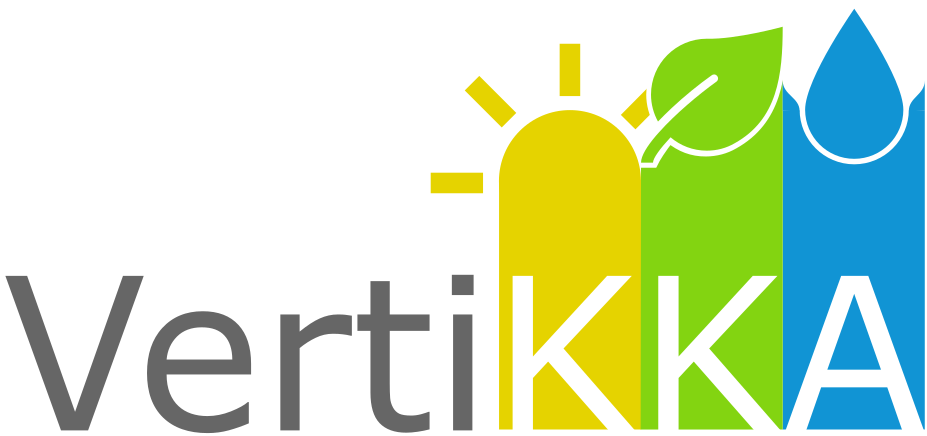Background
Situation in the cities. What contribution can VertiKKA make in urban areas?
According to United Nations estimates, by 2050 more than two thirds of the world's population will live in cities. The sustainable development of cities is a major challenge and was included as part of the UN Sustainable Development Goals.
With increasing densification of urban spaces, there is less and less space left for urban greenery. Yet greenery is important both for the urban climate and for adapting to the consequences of climate change, such as the formation of heat islands or heavy rainfall events. Urban greenery also contributes to a reduction in air pollutants, increases biodiversity and protects soil and groundwater.
Urban green space also has valuable social and design functions. It plays an important role in recreation and improving mental and physical health, increases the attractiveness of a location and creates a new identification with the neighbourhood. Urban green space thus contributes to an overall increase in the quality of life of city dwellers.
Large cities such as Cologne, Hamburg and Munich have already recognised this value and created corresponding strategies and funding programmes for greening and climate adaptation.
Even when financial resources are available, there is often a lack of space for parks and green areas in large cities, densely built-up neighbourhoods and socially disadvantaged residential areas. Where space is at a premium, the potential of façade and roof greening can be maximised and used to increase the overall proportion of green area. Especially in densely built-up areas, urban greenery often suffers from heat and a lack of water. VertiKKA addresses these problems by integrating photo-voltaic modules to protect the plants and using grey water and rainwater for their irrigation.


